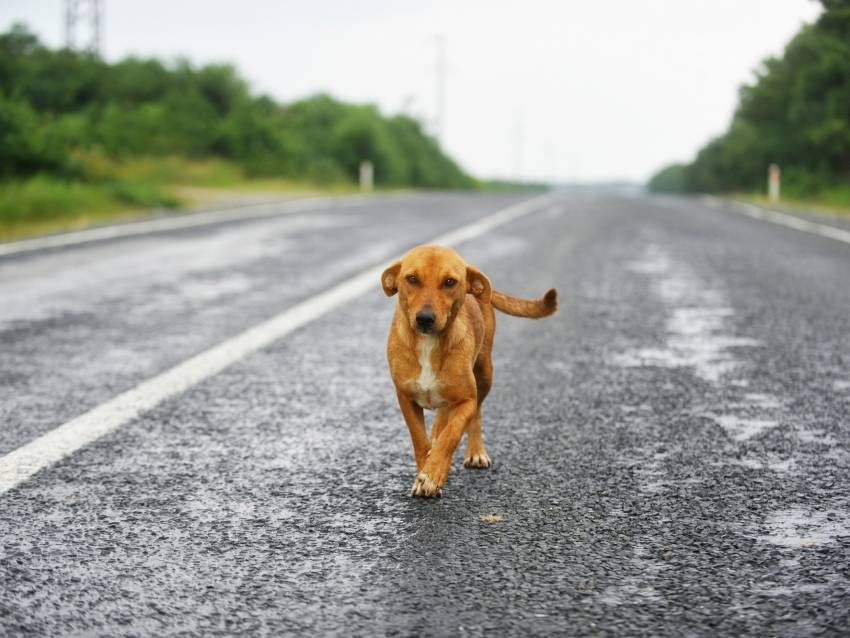Runaway dog
Whether you have just acquired a puppy or your dog is already a certain age, everyone can be confronted with the problem of his pet running away. But why this sudden change of behavior? What can be done to remedy it?
What is a "runaway" dog?
A runaway dog is a dog that ventures out of its usual territory without its owner's permission.
It is important not to confuse running away with not returning. In the first case, the dog does not return when its owner calls it. In the second case, the dog systematically runs away from fences or when it is not on a leash.
Why does my dog run away?
First of all, it should be remembered that some breeds are more prone to running away than others. This is particularly the case with hunting dogs, which are used to going in search of prey.
Of course, one must be wary of generalizations, because each dog has its own character.
Running away can be motivated by several factors that should be identified in order to act accordingly. Thus, a dog can run away :
• because they are bored;
• because he/she suffers from a behavioral disorder: separation anxiety, HS-HA syndrome (hyperactivity, attention deficit disorder);
• because he is afraid, especially of surrounding noises;
• because he wants to join other dogs or a female in heat in the vicinity;
• lack of exercise;
• because he is hungry and needs to search for food.

The different solutions
In order to correct a runaway behavior, one must :
• first identify the reasons why the dog is running away (as explained above) ;
• correct the behavior by means of positive reinforcement and behavioral rehabilitation.
To facilitate the work of the teachers, there are also complementary accessories to the remediation.
Anti-runaway products
The manufacturers of dog accessories have also looked into the problems of running away. Thus, there are now several solutions.
Fences
It seems quite natural that a dog will want to explore the surroundings if its territory is not properly delimited. That's why every dog owner should first make sure that he or she has installed strong fences. These can be found at any hardware or specialty store. Of course, you should always make sure to buy a model according to the weight and size of the dog.
Wireless fences
These are equipped with a radio system and a collar with sound and/or electrostatic stimulation. The principle is simple: the authorized territory zone is delimited by sensors in radio contact with the dog's collar. The collar is activated as soon as the dog leaves this territory, either by emitting an alert sound or by emitting an electrostatic stimulation. There are currently different models that can operate either on batteries or on rechargeable batteries. It is better to choose a collar model with several levels of stimulation in order to respect the sensitivity and well-being of each animal. Of course, all collars are waterproof to ensure maximum safety.
Surveillance cameras
These are small, rotating, with a range of up to 200 m. Their major advantage lies in their adaptation to all modern means of communication. Indeed, the images they transmit can be viewed live on a smartphone or a computer. In addition, they have an infrared vision for a night control, and an audio function allowing the master to talk to his pet.

Therapeutic approaches
In order to correct any undesirable behavior in a dog, it is important to never punish him. On the contrary, the desired behaviors must be systematically reinforced.
Being confronted with a runaway dog requires many changes. Thus, it will be necessary to systematically :
• Never leave it indoors for fear of running away. He could turn into a destructive dog;
• Develop his emotional attachment to his territory by playing with him as much as possible in this area;
• Maintain daily outings: having a garden does not exempt you from going out, which is always an opportunity to socialize the animal while offering a quality time with the owner;
• walk the dog elsewhere than in its living area so that it does not consider the area as its territory and so that it understands the limits of the authorized or not zones.
Then, depending on the cause of the runaways, some type of remediation will be appropriate. Thus:
• in case of fear: the owner will have to work a lot on walking on a leash, which will be an opportunity to gradually get the dog used to outside noises. If the dog is afraid, think of offering him a treat to divert his attention;
• in case of boredom or lack of activity: make sure you leave him enough toys specially designed for him and multiply the exercises during walks. You can also enter him in agility competitions.
• in case of separation anxiety: get your dog used to your absence gradually, starting with the rooms in the house and then extending the time you are away;
• if your dog runs away to join females in heat, castration remains the solution of choice;
• if the runaway is motivated by hunger: think of distributing his daily ration in several meals that you can give him at different times in order to vary his habits.
Any behavioral remediation requires an investment of time and patience. It is extremely important to remain calm in order to obtain long-term results.
In any case, before starting, it is best to consult a veterinarian first to rule out any suspicion of disease. Finally, if you feel helpless despite this advice, don't hesitate to consult a dog behaviorist.

